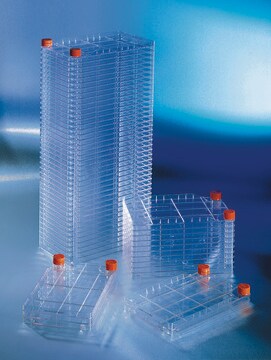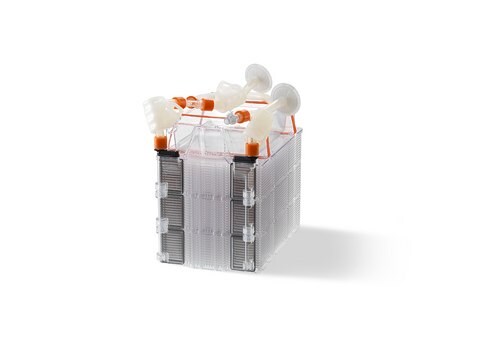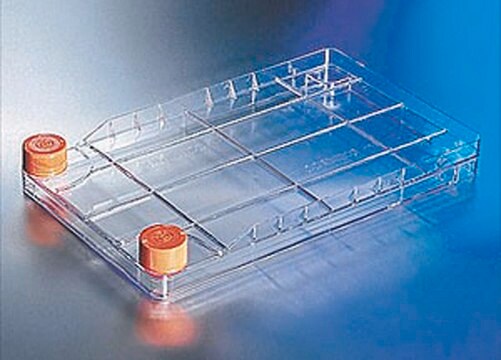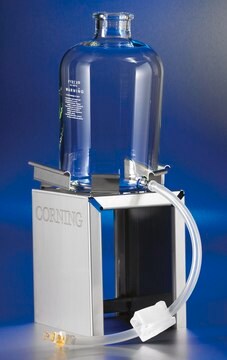CLS10031
Corning® HYPERStack cell culture vessel
surface (non-treated), sterile
Synonim(y):
cell culture bioreactors, cell culture flasks, cell culture vessels
About This Item
Polecane produkty
Materiały
flat cap
high-density polyethylene cap
rectangular bottom flask
straight neck
sterylność
sterile
Właściwości
cap
barcoded
opakowanie
case of 4 ea
producent / nazwa handlowa
Corning 10031
powierzchnia kolby
(1720 cm2)
pojemność robocza kolby
(560 mL)
powierzchnia
1720 cm2
typ wiązania
non-treated surface
kompatybilność
designed for manual cell culture applications
Szukasz podobnych produktów? Odwiedź Przewodnik dotyczący porównywania produktów
Opis ogólny
Zastosowanie
Cechy i korzyści
- Ergonomic Cap: The liner cap of the vessel features a smooth texture, allowing for more ergonomic opening and closing by the operator.
- Adaptor Grid: The new design of the adaptor grid enables faster filling and emptying of the vessel while reducing foam generation.
- Bar Coded: Each individual flask is barcoded for easy reading by the unaided eye or a handheld bar code reader, enabling traceability.
- Crafted with USP Class VI Materials: The flasks are manufactured and assembled in a Certified Class 100,000 clean room using materials that meet USP Class VI standards.
- Sterile: The flasks undergo gamma irradiation to achieve a sterility assurance level (SAL) of 10-6, ensuring their sterility.
- Clean Room Packaging: Each pack of flasks is double bagged to maintain cleanliness during transportation and storage.
- Innovative 10-Layer Design: The flasks feature a unique 10-layer design with interconnected polystyrene growth surfaces.
- Increased Cell Yield: The innovative design results in a 10-fold higher cell yield, significantly increasing productivity and capacity.
- Time and Space Savings: By handling a single flask instead of 10 traditional 175 cm² flasks, processing time and incubator storage space are reduced, leading to time and space savings.
Informacje prawne
Certyfikaty analizy (CoA)
Poszukaj Certyfikaty analizy (CoA), wpisując numer partii/serii produktów. Numery serii i partii można znaleźć na etykiecie produktu po słowach „seria” lub „partia”.
Masz już ten produkt?
Dokumenty związane z niedawno zakupionymi produktami zostały zamieszczone w Bibliotece dokumentów.
Nasz zespół naukowców ma doświadczenie we wszystkich obszarach badań, w tym w naukach przyrodniczych, materiałoznawstwie, syntezie chemicznej, chromatografii, analityce i wielu innych dziedzinach.
Skontaktuj się z zespołem ds. pomocy technicznej




